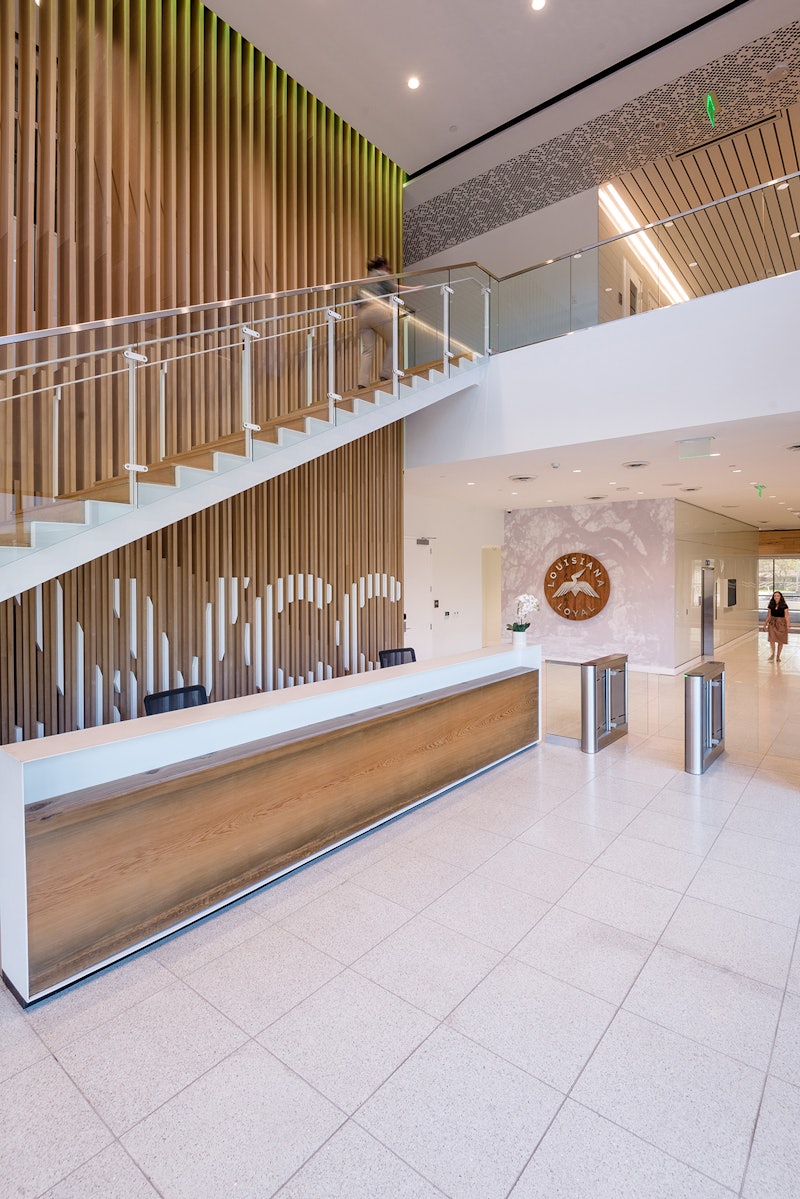

LWCC Renovation
The Louisiana Workers’ Compensation Corporation (LWCC) is a private, nonprofit mutual insurance organization with a natural interest in promoting employee safety and health. Unsurprisingly, when planning to renovate their own headquarters building, they were interested in enhancing the work environment in ways that might promote health in their own workforce. In 2022, in recognition of energy and carbon savings interventions, the project was awarded LEED v4 Silver Certification, making it the first in Louisiana to earn this certification under the new v4 guidelines.
Location
Size
Year of Completion
Certifications
Collaborators
Services
Awards
Photographer Credit
LWCC's existing facility, constructed in 1984, was comprised of 8 isolated floors, typically private offices and high-wall cubicles (many with no view), that experienced frequent complaints about thermal comfort. The design team brought to the conversation peer-reviewed research showing that higher levels of air quality, better thermal comfort, access to views of nature, and design choices that promoted physical activity and access to healthy food options all contribute to worker health and productivity.
The design process began with a study of the existing building and the work patterns of its occupants. This included installation of dataloggers of thermal conditions, indoor air quality and daylight conditions, infrared photography, and utility bill analysis. Instead of locating private offices at the windows, where they block the view for open plan desks at the interior, the ‘flipped’ design with private offices with glass walls pulled to the center means everyone can have a view. Desks are pulled back at least 5 feet from the windows to provide an outboard circulation path that also ensures thermal comfort and reduces glare at the desk.

LWCC's workstations today, with ample natural light and circulation
A Communicating Whole
The other big architectural move involved surgical interventions via selective demolition to create a continuous connection between floors. This approach extended the space planning idea previously developed within floors to horizontally connect certain departments requiring adjacency and broadened it to include vertical connections as well. In theory, by tying certain programs together vertically, a user can reach a separate department one floor above or below by easily and quickly traversing a set of internal stairs surrounding the periphery of every floor. The intervention has a simultaneous benefit of encouraging exercise—integrating a separate key goal of health and wellness to the project redesign. The big takeaway of the LWCC project is that the strategies that help make the building better for the health and productivity of occupants are the same ones that result in substantial energy savings. Better for people, better for the planet.

The reimagined facility inserts a succession of double-height, daylight-filled social spaces with inviting stairs that draw employees up and through the building.

A conference room with requisite technological communications embedded in the custom millwork tables.








